It is easy to consider the main rivers as all important, particularly in terms of angling and this is largely true however, the tributaries that feed all Ayrshire rivers are incredibly important in terms of juvenile production for both trout and salmon and it is in these burns that real progress can be made that would boost fish numbers seen in the main rivers.
Many of these tributaries have been severely impacted by historic modifications such as dams, culverts and dredging and perhaps less obvious issues such as diffuse pollution arising from agriculture, forestry and road run off. With burns under producing across Ayrshire, we see the restoration of access and improved water quality as the first essential steps to restoring functioning habitat and fish populations. Where burns are severely degraded, they may require greater effort than merely cutting diffuse inputs or easing barriers but these are the starting points that must be addressed.
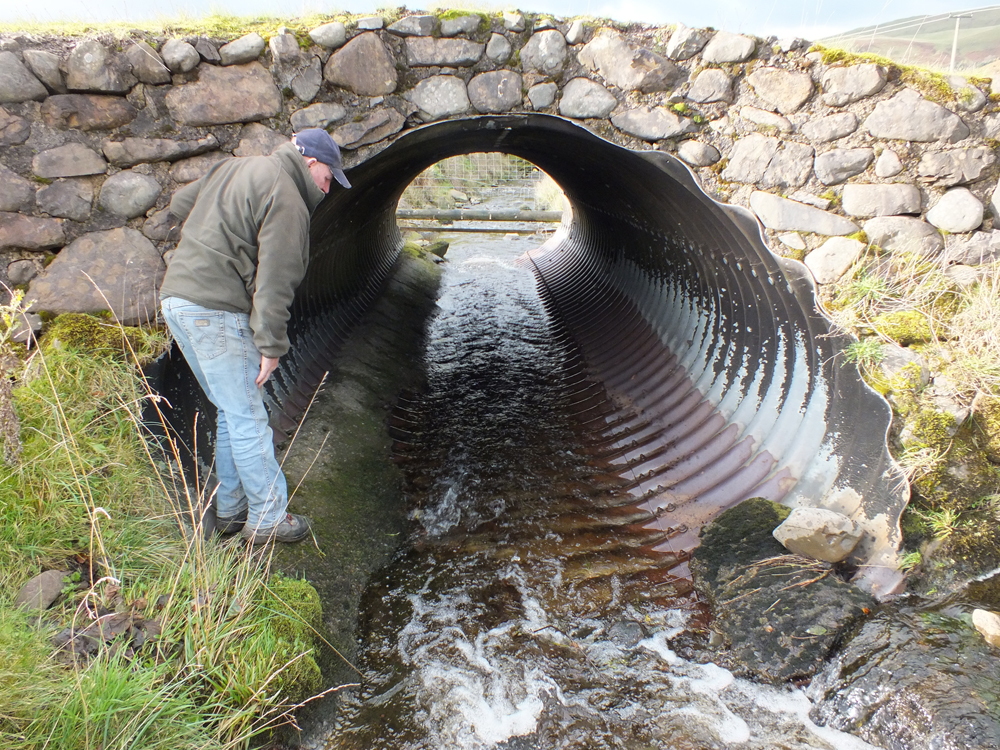
A perched culvert on the Traboyack Burn, (Stinchar catchment) that requires work to improve migration. The DSFB have been asked to help ART find ways to resolve this culvert. Hopefully we will beable to report progress soon.
There’s not a catchment in Ayrshire without these issues from the Stinchar in the south where land use on the upper Assel and the Traboyak culvert are impacting productivity to the Girvan with long term sediment releases and morphological alterations are impacting what should be important spawning areas such as the Dyrock and Barrlewan. The Doon has few tributaries of consequence but the Purclewan at Dalrymple has suffered water quality issues for decades and still does and so too does the Netherton Burn which was described as the most important salmon spawning burn in the catchment during the 19th Century. The Ayr sees the Coyle, Glenstang Burn, and Water of Fail suffering from enrichment and pollution with few producing anything like enough fish. The Greenock has access issues to its prime spawning habitat. None of these burns are nearly as productive as they should be. The upper Irvine suffers with access issues that disconnect burns from their migratory fish populations and similarly in the middle reaches too with the Carmel and Glaisert Burns both blocked to upstream migration and both very enriched.
Last but not least are the Garnock’s burns such as the Caaf, Bombo and Dusk that could all be so much better.
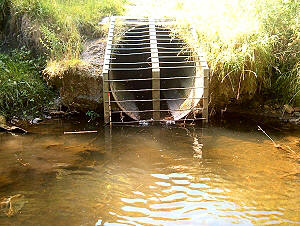
A barrier in the Garnock catchment that was recently refurbished by the council despite our request for a more suitable alternative
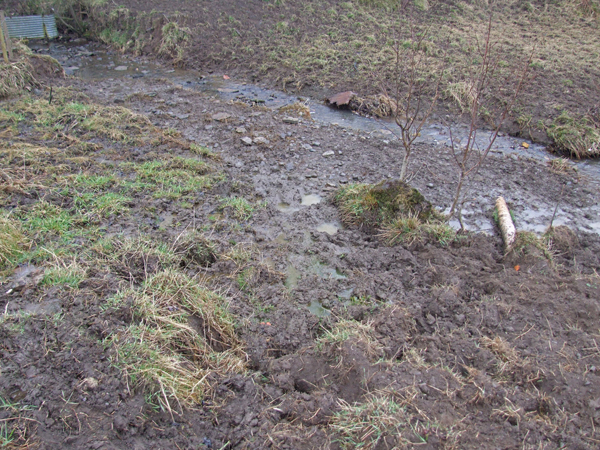
An old photo going back to 2013, but it’s not hard to see where the problems lay. It doesn’t surprise us that simple stock exclusion is inadequate to restore this habitat and other methods may be required. Problems can be 100 years+ in the making so natural recovery may be a slightly unrealistic expectation in some cases.
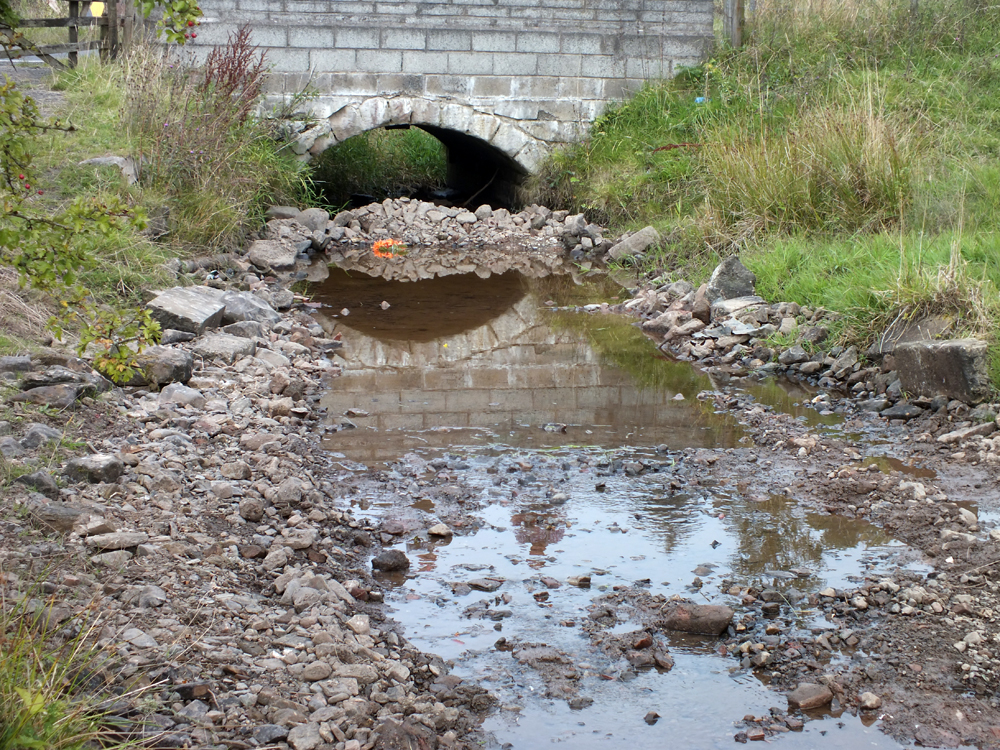
Unlicensed dredging that may have lasting damage. Were there any fish to destroy before the dredging so does it really matter…it’s only a wee burn!

There were multiple issues on site and all leading to water quality issues. ART resolved these problems with the support of the Doon Board and all this burn needs now are a few fish to find their way back in and kick start the recovery process.
These are just a few examples and there are many more.
So with this in mind, ART will continue to recommend that efforts are made to reduce diffuse pollution, open up blocked migratory rotes, plant trees to stabilise banks that will eventually also shade spawning and juvenile production areas and combat some effects of climate change. We also intend to pursue new avenues where we can to restore habitat function where productivity remains compromised despite recent water quality improvement. I’ve heard it said from Government officials that ART are looking for results too quickly but I disagree and my ambition is not to retire in 10 – 12 years time and ask what I’ve really achieved for much of my life’s work. If we sit and wait on things improving slowly, we may bye then have lost any chance of saving our iconic and valuable species. It isn’t just salmon that are under threat, the sea trout have largely disappeared since the 1970’s and our resident brown trout could be so much better in most rivers.
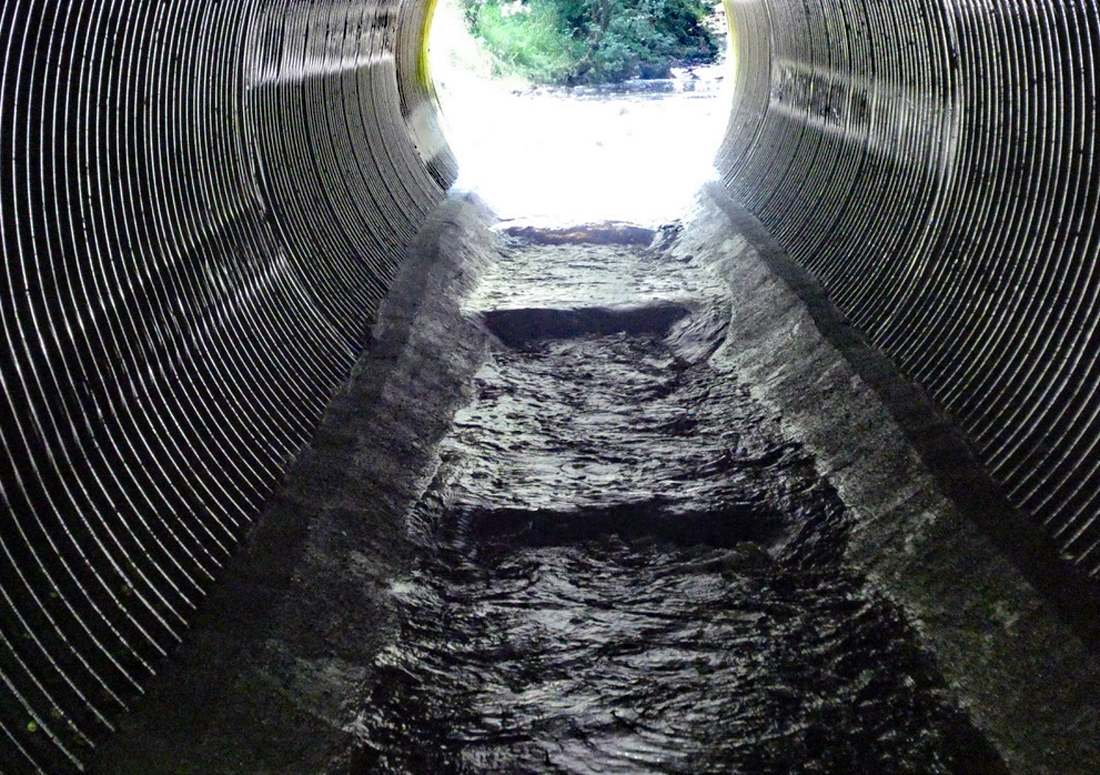
HDPE baffles designed by ART and making a difference to the flow and passage through this culvert
These are actions that we can deliver in combination with anglers, owners and clubs across Ayrshire. They are also issues that are within our ability to improve unlike the marine survival issues which will require multi national approaches.
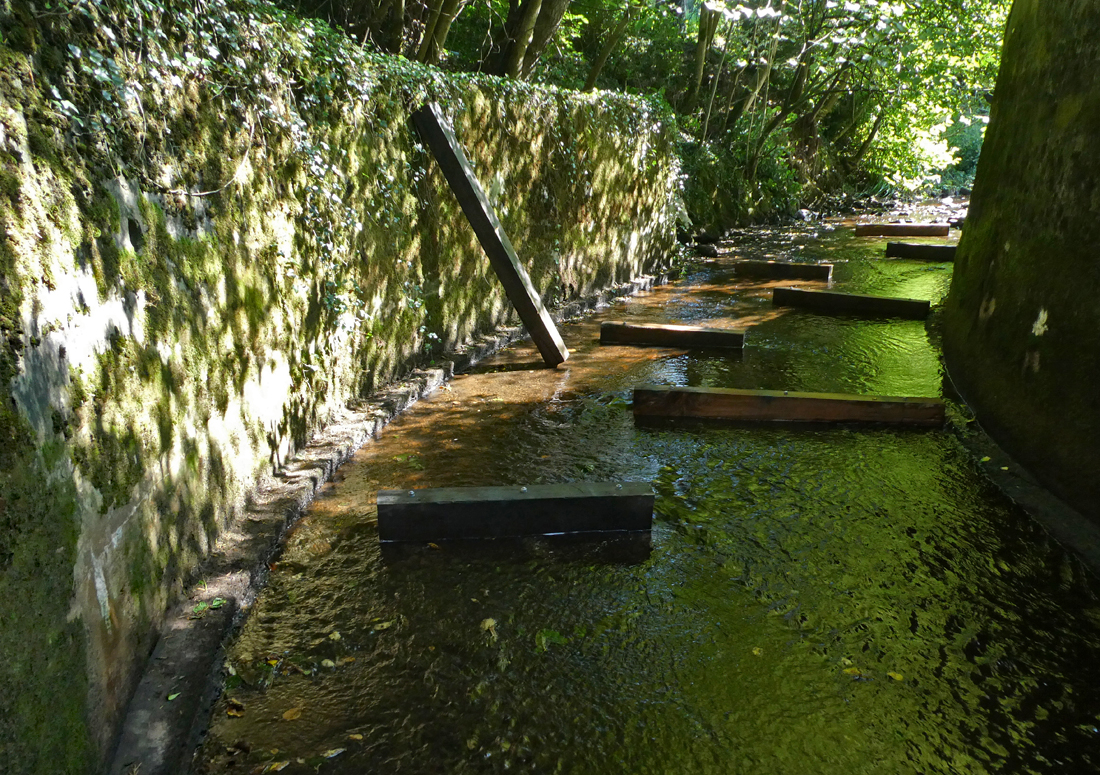
Work underway to ease another migration problem, this time using untreated green oak baffles
Marine survival is a lottery and this years relatively good runs in some rivers are not materialising to the same extent in all. Rather than waste too much energy worrying about issues that we can’t resolve (there are others much larger organisations paid to do that), we will continue to focus on things within the freshwater environment that we can change. making the most of our habitat is key to maximising productivity.
We are happy to discuss any thoughts or suggestions where we might focus our efforts along these lines and welcome our readers input. Clubs willing to work with us to secure funding are welcome to give us a call. It costs nothing to ask for advice or explore options.








